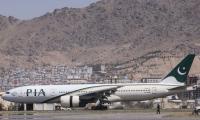KARACHI: Islamic banking industry posted gross profit of Rs15 billion in the second quarter of 2018, compared with Rs12 billion in the same period a year earlier, the central bank said on Monday, as higher growth in financing and investments helped increase the revenue of Shariah-complaint lenders.
The State Bank of Pakistan (SBP), in its Islamic banking bulletin for April-June, said that profitability ratios like return on assets and return on equity of the Islamic banks were recorded at 1.3 percent and 20.9 percent, respectively at the end of June.
During the period under review, operating expense to gross income ratio declined by three percent and stood at 64.5 percent. “Rise in the profitability levels of Islamic financial institutions is contributed by a growing client base and improvement in asset quality,” an industry executive said.
“Their (Islamic banks) advance-to-deposit ratio is higher than that of conventional banks, showing they are lending to the corporates and consumers at faster pace supported by increased economic activity and stable credit conditions.”
The State Bank of Pakistan’s report stated that assets base of the Islamic banks continued to increase amid higher growth in net financing and investments.
Twenty one Islamic banking constitutions consisted of five full-fledged Shariah-complaint banks and 16 conventional banks having standalone Islamic banking branches, had assets
of Rs2.482 trillion in April-June 2018, compared with Rs2.035 trillion the year before and came in at Rs2.334 trillion in the previous quarter.
Deposits at Islamic banks reached Rs2.033 trillion at the end of June, compared with Rs1.720 trillion in the corresponding quarter of 2017. Net investments of Islamic banking industry rose to Rs555 billion during the three months to June 30, up from 4.8 percent from the previous quarter.
Islamic bank’s financing and related assets saw a quarterly growth of 3.1 percent and were recorded at Rs1.323 trillion. “In terms of financing mix, Diminishing Musharaka was the leading mode of financing followed by Musharaka and Murabaha,” the State Bank of Pakistan’s Islamic banking bulletin said.
“In term of sector wise financing, production and transmission of energy and textile sectors remained two leading sectors and their share in overall financing of Islamic banking industry was recorded at 17.1 percent and 11.5 percent, respectively by end June, 2018,” it added.
Financing concentration of Islamic banks showed that the corporate sector
accounted for 74.5 percent share in overall financing of Islamic banking industry, followed by consumer financing with a share of 10.5 percent by end June.
However, Islamic banks’ share of financing in other corporate segments such as small and medium enterprises and agriculture remained low.
Asset quality indicators of Islamic banking industry including non-performing finances (NPFs) to financing (gross) and net NPFs to net financing were recorded at 2.7 percent and 0.4 percent, respectively.
Both these ratios were better than those of overall banking industry’s averages. Many analysts expect Islamic banking sector to continue seeing upward trend in earnings in the coming quarters. However, liquidity management amid deterioration in the government issuance (Sukuk) remains a key challenge for the Islamic lenders.
This picture released on August 13, 2023, shows WAPDA House in Lahore. — Facebook/WAPDALAHORE: Water and Power...
This image released on April 18, 2024, shows the meeting on Kisan Card at the Sindh Secretariat. — Facebook/Jam...
Pakistan State Oil HQs can be seen in this picture. — PSO websiteKARACHI: Pakistan State Oil and Pakistan Railways ...
This representational image shows gold bars. — UnsplashKARACHI: Gold prices increased by Rs500 per tola on Friday in...
Representational image of a working oil pumpjack. — AFP/FileLONDON: Plentiful supplies of some of the biggest crude...
Prime Minister personally promises to ensure that our bureaucracy does not play tricks with them







